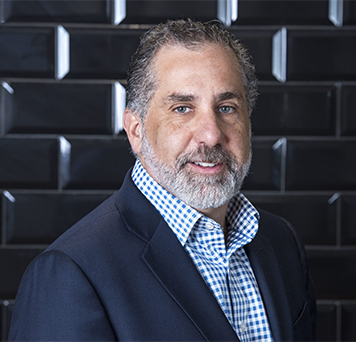The SRP Americas Personality of the Year Award 2020 will be presented to Tim Bonacci, chief executive officer and president of US fintech platform Luma. He received the highest number of votes from respondents to the SRP Americas survey which took place earlier this year.
SRP’s America’s reporter Lavanya Nair, caught up with Tim Bonacci to discuss his expansive career in structured products, year-to-date industry highlights, growth opportunities, and potential investor challenges.
How did you get involved with structured products? What is your professional background?
Tim Bonacci: I worked in wealth management for 15 years before leaving to start Navian in 2005 after seeing an under-served opportunity in structured products. Navian helped regional and super regional banks across the United States build and offer their own structured products. Here in the US, the bigger Wall Street firms were big enough to do this on their own, but regional-sized players could not.
We were building and offering structured products for the regional banks throughout the United States during that time, and also distributed structured products for the larger Wall Street firm issuers.
The biggest evolution in the structured product market is the awareness, adoption and advent of the multi-issuer platforms
We rolled out the first version of our technology in 2012 which was primarily designed to make it easy for our clients and ourselves to offer structured products. As we know, structured products have historically been difficult to trade, price, support and were sometimes more opaque than desired and our technology aimed at improving all of those items. In 2017 we realised that structured product fintech had an opportunity to be more mainstream, and by mid-2018, we spun out the technology into a standalone entity called Luma.
What relevant changes have taken place in the structured products industry?
Tim Bonacci: I think the biggest evolution in the structured product market is the awareness, adoption and advent of the multi-issuer platforms and technology. We had reached capacity in the US market, because historically, these products were traded on spreadsheets and emails, and we, in essence, reached a maximum of how much business could be done manually. We needed more efficiency as well as more transparency, information and education for advisors. Volume in the US had been fairly flat for a number of years because it was just too hard for firms to offer more.
So, I think this big change is what led me to spin out Luma into a separate entity.
What makes Luma unique and what would you highlight as a firm?
Tim Bonacci: Luma very specifically has been designed as a buy-side platform, meaning that we grew up in the industry working with broker-dealers and private banks throughout the country. So, we're really focused on how to make it easier for that buy side to access, utilize, oversee and manage the product.
The fact that we're buy-side has been the biggest benefit since it has helped us win some of the largest private banks in the world as clients because it helps match their needs. One of Luma’s biggest differentiators is that we are customisable or configurable for a given client's use. We learned early on that we need to make the platform easy to support our individual clients. We are on their side so they can match the way they want to drive their business. I think the objectivity and the customisation are the two big things for Luma. It has certainly proven to be desirable to firms because we've seen volume increase substantially. We are processing just about $2 billion a month through Luma, which based on my understanding is the largest volume of any platform globally.
How would you describe the competitive landscape?
Tim Bonacci: In the US, it's a fairly narrow field of platforms, there's really three platforms in the US that are growing and vying for business and all have slightly different approaches. Our approach is sticking to be a buy-side-focused customisable platform. I think we're different than the other platforms in that respect.
We are also an issuer paid model and since we have significant volume, we are able to charge the issuers less than other platforms, which means that the product can be better for end clients.
Where do you detect the growth opportunities and what is your market outlook?
Tim Bonacci: Over the past two years, we have seen very successful growth in the US, and we will see that increase further, and fairly significantly, over the next six to nine months, just from new clients coming online. Additional growth will come from expansion, which we have recently done in Latin America. We have a number of clients that we're bringing on board, and we are actually targeting expansion into Europe shortly as well.
I have a positive outlook for the US market which is much smaller than the European market. I think we can see the US market grow in size over the next several years and this will be facilitated in part by technology which is making structured products more accessible.
What are the main challenges investors face?
Tim Bonacci: I would say that there has been the advent over the last few years of fairly intricate indices with volatility control built into them and allocating across different investments or sectors. That can be a lot to absorb for advisors, so trading becomes absolutely critical. They ask themselves how they can assess, which of those indices are the right investment for their clients.
The other challenge is that investors may question how a structured product fits into their portfolio along with regular stocks or bonds. Technology can help them more easily assess how a structured product can, for example, change their efficient frontier or Sharpe ratio.
The SRP Americas Awards 2020 will take place on 15 September at 6PM EST. Register for free now!
